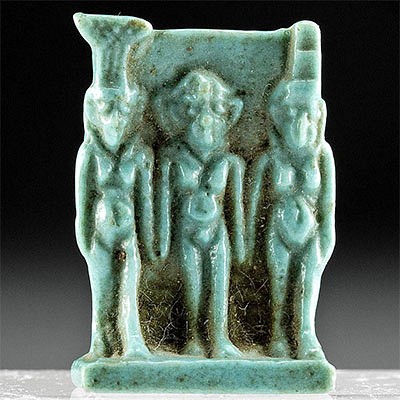19th. Dutch Baroque Style Brass Verge & Weight Clock
Lot 309
About Seller
Artemis Gallery
686 S Taylor Ave, Ste 106
Louisville, CO 80027
United States
Selling antiquities, ancient and ethnographic art online since 1993, Artemis Gallery specializes in Classical Antiquities (Egyptian, Greek, Roman, Near Eastern), Asian, Pre-Columbian, African / Tribal / Oceanographic art. Our extensive inventory includes pottery, stone, metal, wood, glass and textil...Read more
Categories
Estimate:
$600 - $900
Absentee vs Live bid
Two ways to bid:
- Leave a max absentee bid and the platform will bid on your behalf up to your maximum bid during the live auction.
- Bid live during the auction and your bids will be submitted real-time to the auctioneer.
Bid Increments
| Price | Bid Increment |
|---|---|
| $0 | $25 |
| $300 | $50 |
| $1,000 | $100 |
| $2,000 | $250 |
| $5,000 | $500 |
| $10,000 | $1,000 |
| $20,000 | $2,500 |
| $50,000 | $5,000 |
| $100,000 | $10,000 |
| $200,000 | $20,000 |
About Auction
By Artemis Gallery
Aug 5, 2021
Set Reminder
2021-08-05 10:00:00
2021-08-05 10:00:00
America/New_York
Bidsquare
Bidsquare : VARIETY SALE | Antiquities & Ethnographic Art
https://www.bidsquare.com/auctions/artemis-gallery/variety-sale-antiquities-ethnographic-art-7292
Featuring classical antiquities, ancient and ethnographic art from cultures encompassing the globe. Egyptian, Greek, Roman, Etruscan, Near Eastern, Asian, Pre-Columbian, Native American, African / Tribal, Oceanic, Spanish Colonial, Russian, Fossils, Fine Art, more! Artemis Gallery info@artemisgallery.com
Featuring classical antiquities, ancient and ethnographic art from cultures encompassing the globe. Egyptian, Greek, Roman, Etruscan, Near Eastern, Asian, Pre-Columbian, Native American, African / Tribal, Oceanic, Spanish Colonial, Russian, Fossils, Fine Art, more! Artemis Gallery info@artemisgallery.com
- Lot Description
Western Europe, Netherlands or Germany, ca. 19th century CE. A beautiful wall clock made of brass, pewter, gilt wood, and leaded weights, that operates with a verge escapement mechanism. The clock face has Roman numerals painted in black on the pewter face. The face is mounted on a red lacquer panel with wooden scrollwork decorating the top. The verso is completely open and shows off the mechanism that consists of a crown wheel, the gear shaped like a crown, and a lengthy chain with three leaded weights of different sizes hang from the bottom of this gear and drive the motion. The motion is repeatedly checked by a pair of metal pallets on a vertical shaft that stop the successive teeth. The verge escapement mechanism was invented sometime in the 1300s and persisted in clockmaking into the 1800s. This is a beautiful timepiece, and it is always interesting to see the inner workings of such simple yet complex devices! Size of face: 5" L x 3.5" W x 6.75" H (12.7 cm x 8.9 cm x 17.1 cm); chain: 74" L (188 cm)
Provenance: private J. P. collection, Rye, Colorado, USA; ex-Bill Buffinger collection, Hollywood, California, USA, purchased February 11, 2009; ex-Eron Johnsons Antiques, Denver, Colorado, USA
All items legal to buy/sell under U.S. Statute covering cultural patrimony Code 2600, CHAPTER 14, and are guaranteed to be as described or your money back.
A Certificate of Authenticity will accompany all winning bids.
Replace: PLEASE NOTE: Due to recent increases of shipments being seized by Australian & German customs (even for items with pre-UNESCO provenance), we will no longer ship Replace: most antiquities and ancient Chinese art to Australia & Germany. For categories of items that are acceptable to ship to Australia or Germany, please contact us directly or work with your local customs brokerage Replace: firm.
Display stands not described as included/custom in the item description are for photography purposes only and will not be included with the item upon shipping.
#166202Does not work. Bending to some mechanical parts. Chips to git and craquelure of red lacquer. Chain has a segment which appears to be a newer brass. Areas of patina. Integral bracket on verso is secure and the clock can be mounted and displayed.Condition
- Shipping Info
-
All shipping is handled in-house for your convenience. Your invoice from Artemis Gallery will include shipping calculation instructions. If in doubt, please inquire BEFORE bidding for estimated shipping costs for individual items.
-
- Buyer's Premium



 EUR
EUR CAD
CAD AUD
AUD GBP
GBP MXN
MXN HKD
HKD CNY
CNY MYR
MYR SEK
SEK SGD
SGD CHF
CHF THB
THB















